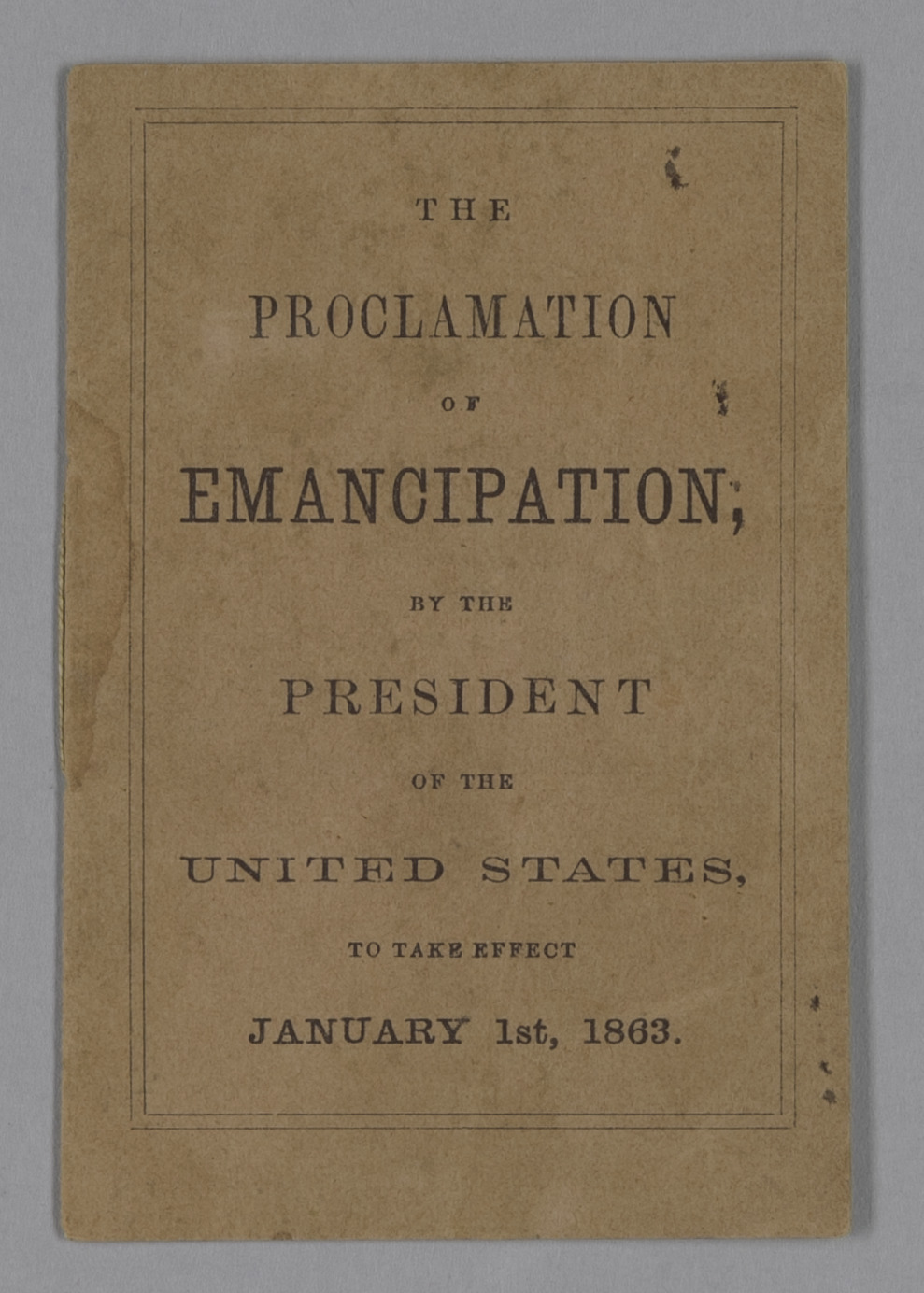National Museum of African American History and Culture To Observe 160th Anniversary of the Emancipation Proclamation Issued by President Lincoln

The Proclamation of Emancipation by the President of the United States, to take effect January 1st, 1863. Collection of the Smithsonian National Museum of African American History and Culture.
The Smithsonian’s National Museum of African American History and Culture (NMAAHC) is recognizing the 160th anniversary of the Emancipation Proclamation. In honor of this important moment, the museum encourages visitors to reflect on the words featured in early copies of a handheld pamphlet of the Emancipation Proclamation, an original signed copy of President Abraham Lincoln’s Executive Order and an original handwritten signed copy of the 13th Amendment, all on display in the museum’s “Slavery and Freedom” exhibition. The Emancipation Proclamation and the 13th Amendment are two of the most important documents in the nation’s history. They helped the country fulfill the highest ideal of liberty by ensuring a more inclusive manifestation of freedom. For more details and to learn more, visit nmaahc.si.edu/emancipation.
“It is important that we remember the hard-fought battle for freedom and what it took to ensure freedom for all,” said Mary Elliott, curator of American slavery at the museum. “The Emancipation Proclamation did not free all enslaved people. Yet, it was foundational in the march toward freedom, and it struck a mighty blow to the system of slavery. The 13th Amendment finally knocked out slavery in the nation.”
On Sept. 22, 1862, Lincoln issued the preliminary Emancipation Proclamation. In local churches, enslaved and free people awaited the midnight hour for the Emancipation Proclamation to go into effect. The occasion became known as “Watch Night.” Under his wartime authority as commander in chief, Lincoln ordered that, as of Jan. 1, 1863, all enslaved individuals in all areas still in rebellion against the United States “henceforward shall be free.” Pastor John C. Gibbs of Philadelphia’s First African Presbyterian Church declared, “The Proclamation has gone forth, and God is saying to this nation by its legitimate constitute head, Man must be free.” The Emancipation Proclamation also enabled African American men to enlist in the armed forces. The war to preserve the Union became a war to end slavery. The proclamation was limited in scope but revolutionary in its impact.
The 13th Amendment completed what free and enslaved African Americans, abolitionists and the Emancipation Proclamation set in motion. On Dec. 6, 1865, the U.S. government abolished slavery by amending the Constitution to state: “Neither slavery nor involuntary servitude, except as a punishment for crime whereof the party shall have been duly convicted, shall exist within the United States, or any place subject to their jurisdiction.”
To honor the 160th anniversary of the Emancipation Proclamation, the museum is hosting a screening of the new Netflix film Descendant Saturday, Jan. 7 at 2 p.m., presented by the museum’s public programs department and the Robert F. Smith Explore Your Family History Center. The film documents the search and recovery of the Clotilda, the last known ship to arrive in the United States illegally carrying enslaved Africans, in Mobile, Alabama. After the film, there will be a panel discussion moderated by Elliott and featuring Margaret Brown, director of the film; Kern Jackson, co-writer and co-producer of the film; Veda Tunstall and Joycelyn Davis, descendants of passengers of the Clotilda; and executive producer Ahmir “Questlove” Thompson. Admission is free; however, registration is required.
About the National Museum of African American History and Culture
Since opening Sept. 24, 2016, the National Museum of African American History and Culture has welcomed more than 8.5 million in-person visitors and millions more through its digital presence. Occupying a prominent location next to the Washington Monument on the National Mall in Washington, D.C., the nearly 400,000-square-foot museum is the nation’s largest and most comprehensive cultural destination devoted exclusively to exploring, documenting and showcasing the African American story and its impact on American and world history. For more information about the museum, visit nmaahc.si.edu, follow @NMAAHC on Twitter, Facebook and Instagram, or call Smithsonian information at (202) 633-1000.
# # #
SI-419-2022
